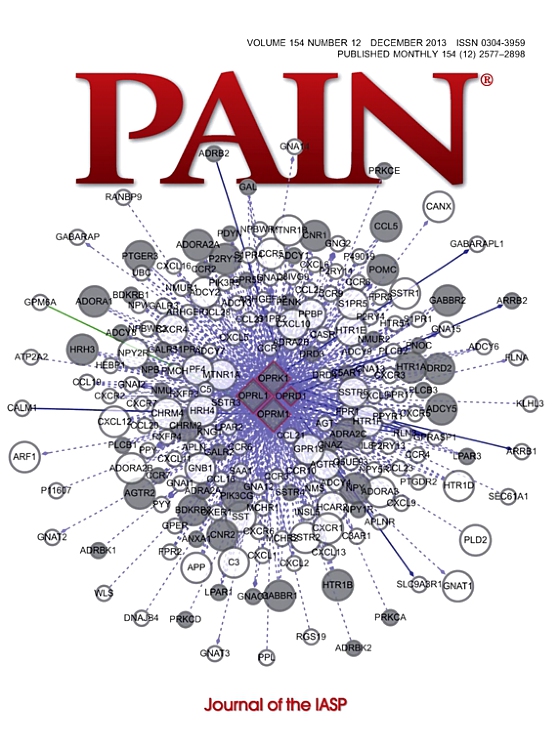Application of neurite orientation dispersion and density imaging in characterizing brain microstructural changes in classical trigeminal neuralgia and a comparison between the left and right sides.
IF 5.9
1区 医学
Q1 ANESTHESIOLOGY
引用次数: 0
Abstract
Diffusion tensor imaging can detect brain white matter changes in classical trigeminal neuralgia (TN). However, it lacks specificity for individual tissue microstructural features, such as neurite density, orientation dispersions, and extracellular edema. Neurite orientation dispersion and density imaging (NODDI), a novel diffusion magnetic resonance imaging (MRI) technique, can provide these distinct indices. We characterized brain microstructural alterations in patients with unilateral TN using NODDI and compared the difference between left- and right-side TN (LTN and RTN, respectively). Diffusion-weighted imaging was performed on 39 patients with LTN, 37 patients with RTN, and 37 healthy controls. Neurite orientation dispersion and density imaging-related indices, including the intracellular volume fraction (Vic), orientation dispersion index (ODI), and isotropic volume fraction (Fiso), were estimated and compared using tract-based spatial statistics and voxel-based region-of-interest analysis. The LTN and RTN groups exhibited microstructural abnormalities in white and gray matter as measured by decreased fractional anisotropy and Vic and elevated Fiso, respectively. These alterations were associated with clinical features and were mainly located in the frontal lobe, corona radiata, internal capsule, and thalamus. The angular variation of neurites, characterized by ODI, exhibited no significant changes between TN and control groups. Patients with classical TN of either side exhibited reduced Vic and increased Fiso, which indicated decreased density of axons and dendrites and neuroinflammatory edema in bilateral hemispheres. Neurite orientation dispersion and density imaging is a useful technique for in vivo diffusion MRI of white and gray matter in the brain, which provides additional metrics and information closely related to the tissue microstructure that merits further study of TN pathogenesis.神经突定向弥散和密度成像在典型三叉神经痛脑显微结构变化特征及左右侧比较中的应用。
弥散张量成像可以检测经典三叉神经痛(TN)的脑白质变化。然而,它缺乏个体组织微观结构特征的特异性,如神经突密度、取向分散和细胞外水肿。神经突定向弥散和密度成像(NODDI)是一种新型的扩散磁共振成像(MRI)技术,可以提供这些不同的指标。我们使用NODDI对单侧TN患者的脑显微结构改变进行了表征,并比较了左右侧TN(分别为LTN和RTN)的差异。对39例LTN患者、37例RTN患者和37名健康对照者进行弥散加权成像。利用基于束的空间统计和基于体素的感兴趣区域分析,估计并比较了神经突取向弥散和密度成像相关指数,包括细胞内体积分数(Vic)、取向弥散指数(ODI)和各向同性体积分数(Fiso)。LTN和RTN组分别表现出白质和灰质的微结构异常,分别通过分数各向异性降低和Vic和Fiso升高来测量。这些改变与临床特征有关,主要位于额叶、辐射冠、内囊和丘脑。以ODI为特征的神经突角度变化在TN组和对照组之间无显著变化。双侧经典TN患者表现为Vic降低,Fiso升高,表明双侧半球轴突和树突密度降低,神经炎性水肿。神经突定向弥散和密度成像是一种有用的脑白质和灰质体内弥散MRI技术,它提供了与组织微观结构密切相关的额外指标和信息,值得进一步研究TN的发病机制。
本文章由计算机程序翻译,如有差异,请以英文原文为准。
求助全文
约1分钟内获得全文
求助全文
来源期刊

PAIN®
医学-临床神经学
CiteScore
12.50
自引率
8.10%
发文量
242
审稿时长
9 months
期刊介绍:
PAIN® is the official publication of the International Association for the Study of Pain and publishes original research on the nature,mechanisms and treatment of pain.PAIN® provides a forum for the dissemination of research in the basic and clinical sciences of multidisciplinary interest.
 求助内容:
求助内容: 应助结果提醒方式:
应助结果提醒方式:


